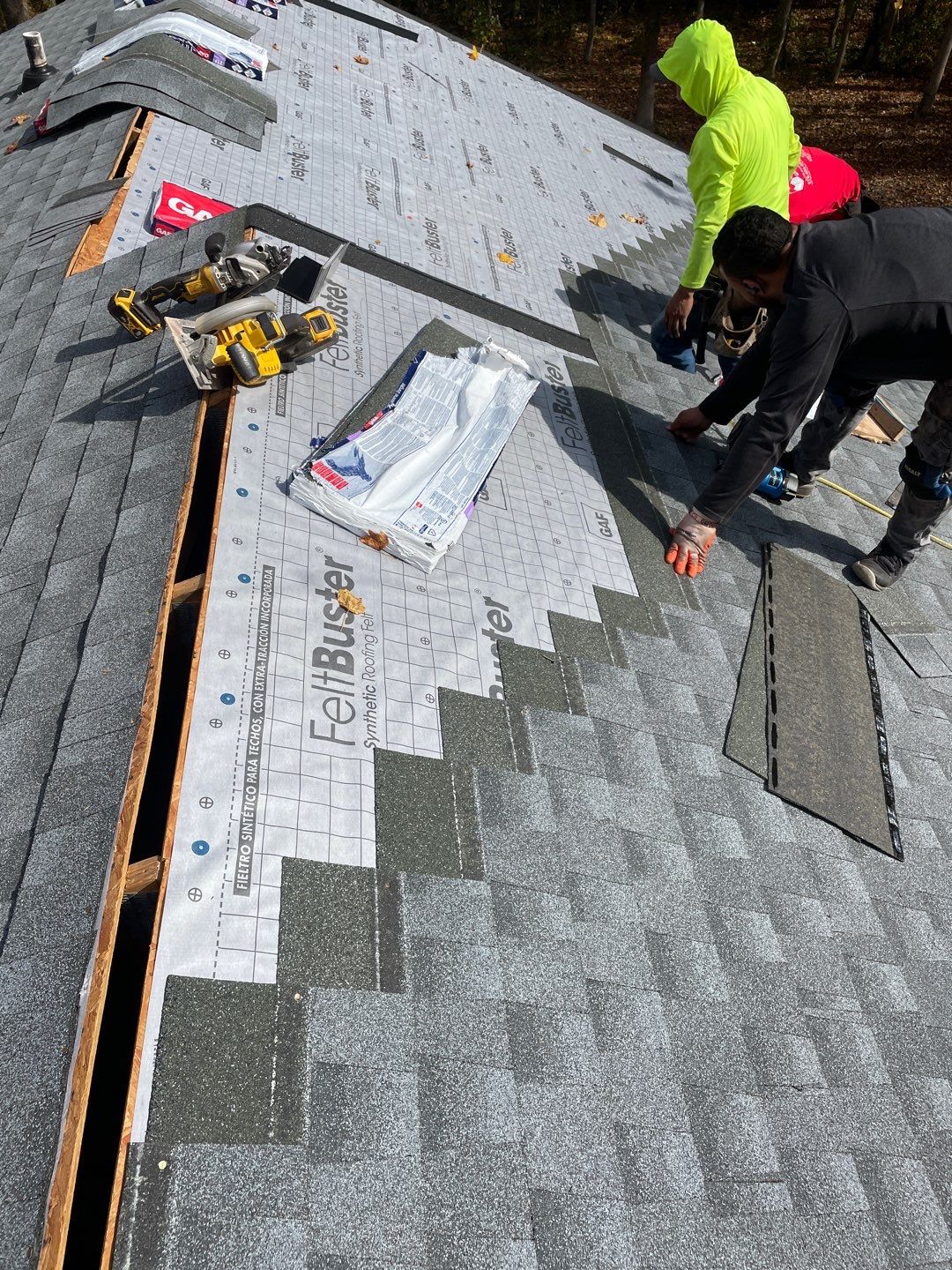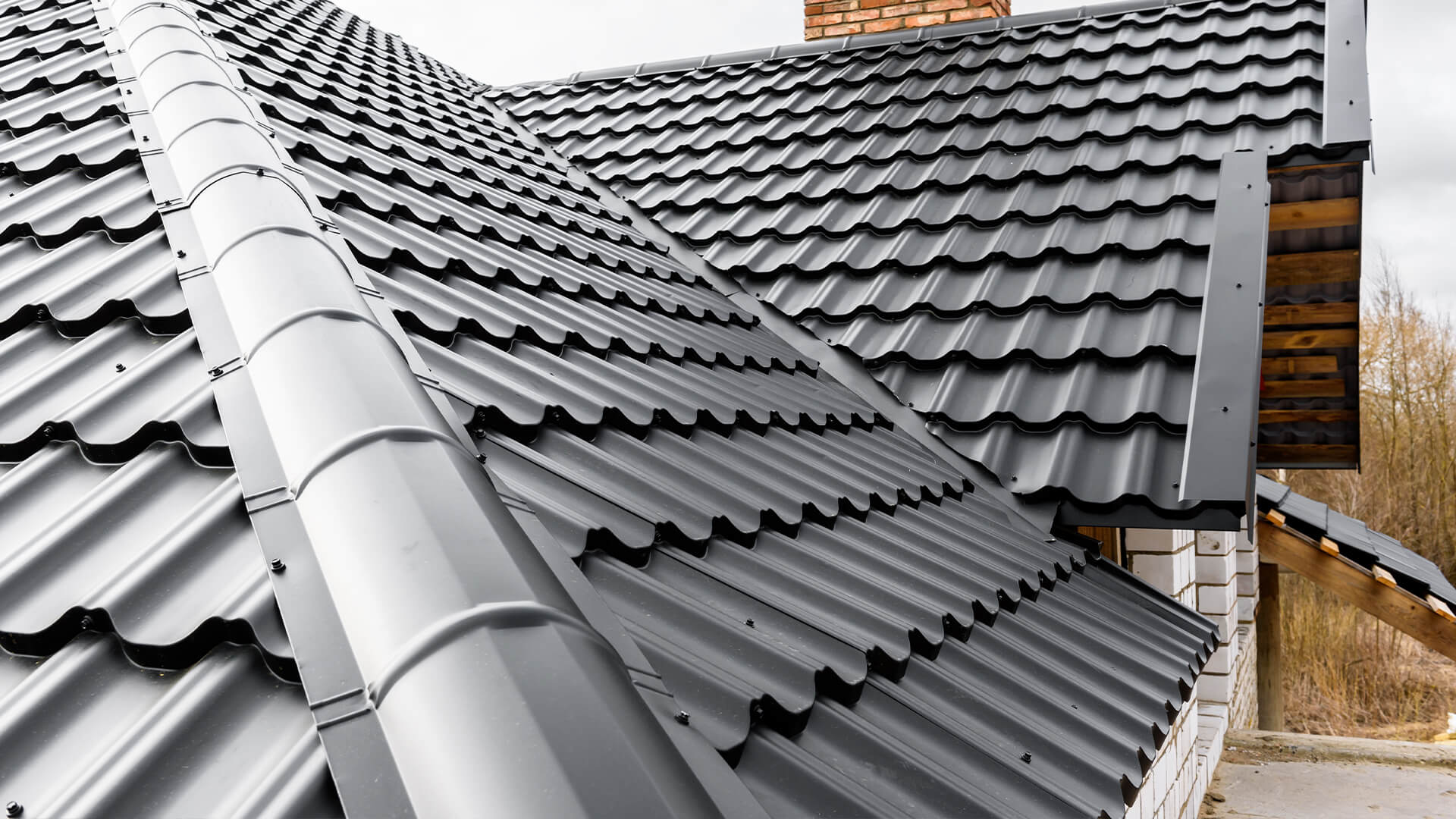The Advantages of Working with Gainesville FL Roofing Companies
The Advantages of Working with Gainesville FL Roofing Companies
Blog Article
Best Practices for Ensuring Correct Roof Ventilation
Making certain correct roofing ventilation is essential for the durability and efficiency of a roofing system. A well balanced consumption and exhaust air vent proportion, commonly 1:300, plays a crucial function, with intake vents ideally positioned at the reduced edge of the roofing for great air access and exhaust vents at the peak for cozy air exit. Routine inspections to identify clogs and preserve clear air flow are paramount. Keeping insulation away from vents is essential to prevent airflow constraint. Comprehending these fundamental elements establishes the stage for more thorough insights right into installation and maintenance techniques that can considerably boost your roof's efficiency.
Understand Ventilation Essentials
Properly understanding air flow fundamentals is necessary for guaranteeing the long life and efficiency of roof covering systems. Efficient air flow minimizes wetness accumulation and temperature extremes in the attic, both of which can cause considerable architectural damages over time. A well-ventilated roofing aids in preventing usual concerns such as mold and mildew development, timber rot, and ice dams, which can endanger the integrity of the roof covering materials and the underlying structures.
The primary objective of air flow is to promote the activity of air, enabling for a regular exchange between the interior and outside settings. This equilibrium is accomplished through a mix of intake and exhaust vents that collaborate to keep optimum airflow. Intake vents, generally situated along the soffits or eaves, enable fresh air to get in the attic room, while exhaust vents, often positioned at or near the roof covering ridge, make it possible for hot, humid air to escape.
Trick aspects influencing the effectiveness of roof ventilation include correct placement, adequate sizing, and making certain that both intake and exhaust vents are unhampered. Regular examination and upkeep are important to recognize prospective blockages, damage, or inadequacies in the ventilation system, thereby guarding the roof's efficiency and sturdiness.
Kinds Of Roofing Vents
Roofing system vents play a crucial function in maintaining efficient attic room air flow and, by extension, the overall health of the roof system. Different types of roof covering vents are readily available, each with unique advantages tailored to particular roof needs.

Soffit vents are set up under the eaves and operate in tandem with roof vents to make certain a well balanced consumption and exhaust system. By enabling cooler air to get in from below, soffit vents facilitate the expulsion of hot air through upper vents. Gable vents, situated on the outside walls of the attic, offer one more effective service, specifically in homes with gable roofings.
Evaluate Your Present Air Flow

Following, take into consideration the age and problem of your roof materials and air flow parts. Older systems might not abide with current building ordinance or may have worn away over time, lowering their performance. Conduct a detailed assessment to recognize any type of signs of wear and tear, such as corrosion, damage, or about his spaces that might endanger the system's performance.
In addition, gauge the attic temperature level and moisture degrees. High temperature levels and moisture can show poor air flow - gainesville roofing companies. Use a hygrometer and thermostat to acquire exact analyses, comparing them with outdoor problems. Relentless disparities suggest prospective concerns that require attending to.
Setup Best Practices
Efficient installation of roofing ventilation systems is extremely important for guaranteeing ideal performance and longevity. Appropriate installation starts with comprehending the specific ventilation needs of the roofing and the structure it covers. This involves calculating the proper proportion of consumption to wear down vents, typically sticking to the 1:300 guideline, which states one square foot of air flow for each 300 square feet of attic room flooring room.

The positioning of vents is similarly critical. Intake vents must be installed at the roof covering's lower side, usually in the soffits, to enable awesome air to go into. Exhaust vents, on the other hand, ought to be set up near or at the roofing system's optimal to facilitate the exit of cozy, damp air. This creates an all-natural air flow that aids keep temperature level and dampness balance within the attic room room.
Seal all air vent connections thoroughly to stop air leaks and possible water seepage. Usage top quality materials and comply with producer standards to guarantee longevity and effectiveness. Furthermore, integrating ridge vents with baffles can considerably improve air flow efficiency by preventing wind-driven rain and snow from going into the attic room.
Ultimately, exact setup of roofing ventilation systems reduces prospective problems such as mold growth, ice dams, and structural damage, making sure the roof's integrity and the building's overall health and wellness.
Regular Maintenance Tips
Consistency in maintenance methods is essential to making sure the lasting efficiency of roofing air flow systems. Routine inspections are essential, ideally performed biannually-- in the spring and loss. Throughout these assessments, guarantee that vents are without particles, nests, Read Full Report and other obstructions that can hinder air movement. Look for any type of indications of dampness buildup or mold, as these can indicate improper ventilation or leakages (gainesville roofing companies).
Utilize a soft brush or a vacuum cleaner to remove dirt and particles from intake and exhaust vents. Be mindful not to damage the vent screens or louvers throughout the process.
Appropriate insulation is similarly crucial. Ensure that attic insulation does not obstruct the vents, as this can drastically limit airflow. If any type of insulation has actually changed or resolved, reposition or replace it to preserve a reliable barrier.
Lastly, replace any type of harmed or missing out on parts promptly. Broken vents, fractured shingles, or shabby flashing can all add to poor air flow and needs to be attended to right away. Routine upkeep guarantees that the roof covering air flow system functions optimally, consequently extending the lifespan of the roofing system itself.
Conclusion
Making sure proper roof covering air flow is critical for preserving the effectiveness and toughness of a roof. Adherence to the 1:300 intake and exhaust air vent ratio, paired with the calculated positioning of vents, address is crucial. Routine biannual inspections, debris cleaning, and making certain insulation does not block air movement are crucial practices. Applying these finest methods will promote a well-ventilated roof, thereby alleviating prospective concerns related to moisture accumulation and excessive warm, ultimately extending the roofing system's life-span.
A well balanced intake and exhaust vent ratio, generally 1:300, plays a critical duty, with intake vents ideally put at the reduced edge of the roofing for great air entrance and exhaust vents at the peak for warm air exit. Intake vents, normally located along the soffits or eaves, allow fresh air to go into the attic room room, while exhaust vents, usually situated at or near the roof covering ridge, enable hot, damp air to escape.
Soffit vents are set up under the eaves and job in tandem with roofing vents to guarantee a well balanced intake and exhaust system. By enabling cooler air to go into from below, soffit vents assist in the expulsion of hot air with top vents. Adherence to the 1:300 consumption and exhaust vent ratio, coupled with the calculated positioning of vents, is essential.
Report this page